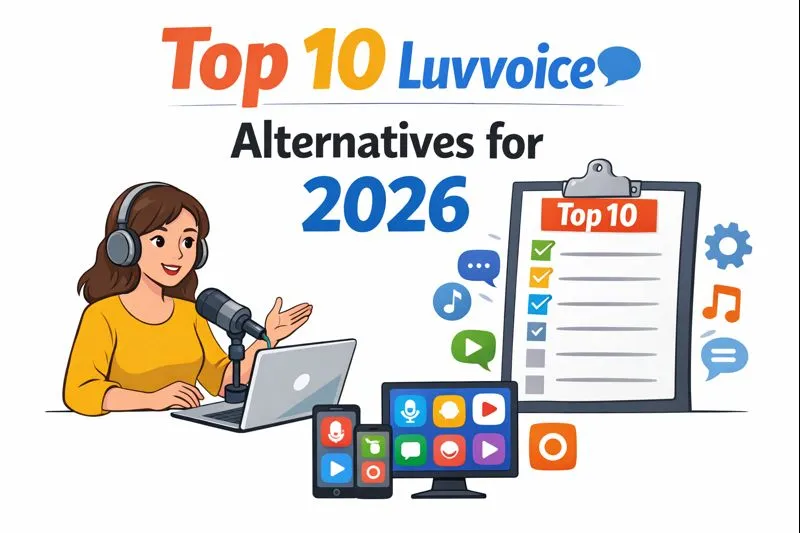Voice Cloning: Duplicate Your Voice Online in 30 Seconds
TL;DR
Introduction: The Rise of Voice Cloning
Isn't it kinda wild how tech is letting us do stuff like, clone our own voices now? Seriously, it's both amazing and a little freaky, right?
Voice cloning is really taking off, and there's a few reasons why:
- First off, ai and machine learning have gotten way better. What used to sound super robotic is now getting pretty darn close to the real deal. (The Sesame voice model has been THE moment for me)
- Plus, it's becoming more accessible. You don't need to be some tech wizard or have a super expensive setup to get in on it.
- And honestly, the possibilities are kinda endless. Think about personalized customer service, creating audiobooks without having to sit in a studio for hours, or even helping people who've lost their voice communicate again.
Yeah, I know, duplicating your voice online in like, 30 seconds sounds like some kinda sci-fi movie. (Voice Cloning Sounds Like Science Fiction, But It's Already ...) But, it's real. of course, it's not perfect. Sometimes the cloned voice sounds a little off, or it doesn't quite capture all the nuances of your real voice. It's still early days, and there's limitations. Still, the tech is advancing, and it's getting better all the time.
So, how exactly does this voice cloning magic work? That's what we'll get into next.
The 30-Second Voice Cloning Process: A Step-by-Step Guide
Okay, so you've picked your voice cloning tool, ready to go? Sweet! Now comes the part where you actually, y'know, make the clone. It all starts with recording a sample of your voice. Sounds easy, but there's a little more to it than just yapping into your phone.
Here's the lowdown:
- Quality is king (or queen!): Seriously, the better the recording, the better the clone. Think of it like this: garbage in, garbage out. You want a nice, clean recording without a ton of background noise.
- Location, location, location: Find a quiet spot. I'm talking library quiet. No barking dogs, no chatty roommates, no construction going on outside. A closet full of clothes can actually work pretty well to dampen sound, or maybe a walk-in pantry?
- Mic check one two: Your phone's mic can work in a pinch, but if you're serious, grab a decent USB microphone. You don't need to break the bank, but a little investment here goes a long way.
Oh, and pro tip: speak clearly, and at a consistent volume. No mumbling, no shouting. Think "professional voiceover artist," even if you feel like a goofball. It'll pay off in the end, trust me.
Next up, we'll get that sample uploaded and let the ai do its thing. This is where the magic really happens. You upload your clean audio file to the voice cloning platform. The ai then analyzes your voice's unique characteristics – pitch, tone, cadence, and even subtle inflections. It's like teaching a computer to mimic your vocal fingerprint. This processing usually takes just a few seconds, depending on the length of your sample and the platform's speed. Once it's done, you'll have a digital version of your voice ready to go.
Use Cases: Where Can You Use Your Cloned Voice?
Okay, so you got your voice cloned, now what? It's kinda like having a digital twin, but for your voice. Wild, right?
- Personalized Voice Assistants: Imagine your Google Home or Alexa responding in your voice. That's some next-level customization.
- Custom Alerts: Instead of the same old ringtone, get notifications in your voice. "Hey, don't forget that meeting!" Might actually make you pay attention, right?
- Helping those who need it: This is where it gets really cool. For individuals with speech impairments, a cloned voice can be a game-changer. It lets them communicate with a voice that's still theirs.
I think there's a lot more to come in this field, what do you think?
Next, we'll explore how voice cloning can enhance accessibility.
Enhancing Accessibility with Voice Cloning
Voice cloning isn't just about convenience or novelty; it's a powerful tool for making the world more accessible. For individuals who have lost their ability to speak due to illness, injury, or medical conditions, a cloned voice can be a lifeline.
- Restoring Communication: Imagine someone who can no longer speak being able to communicate using a voice that sounds like their own. This can be incredibly empowering and help them maintain a sense of identity and connection.
- Personalized Assistive Technology: Cloned voices can be integrated into assistive devices, making them more intuitive and personal for users. This could range from text-to-speech software to specialized communication aids.
The ability to communicate in a familiar voice can significantly improve the quality of life for many.
Now, let's talk about the important stuff – the ethical side of things.
Ethical Considerations and Responsible Use
Okay, so voice cloning's cool, but what about the dark side? It's a real concern. Think about it – someone could use your voice to say things you'd never say.
- Consent is KEY: You gotta have permission before cloning someone's voice. No ifs, ands, or buts.
- Transparency matters: if you're using a cloned voice in a video, let people know. It's just the right thing to do.
- Deepfakes are scary: Voice cloning can be used to create convincing audio deepfakes, which can spread misinformation. we need to be vigilant about this issue.
Next up, we'll look at combating misinformation!
Combating Misinformation with Voice Cloning Awareness
The rise of voice cloning, while exciting, also presents a significant challenge: the potential for misuse in spreading misinformation. Deepfake audio can be incredibly convincing, making it harder for people to discern truth from fiction.
- Educating the Public: It's crucial to raise awareness about the existence and capabilities of voice cloning technology. The more people understand how it works, the more likely they are to be skeptical of suspicious audio content.
- Developing Detection Tools: Researchers and developers are working on sophisticated tools to detect AI-generated audio. These technologies will be vital in identifying and flagging misinformation.
- Promoting Media Literacy: Encouraging critical thinking and media literacy skills helps individuals evaluate the information they consume, regardless of its source.
By understanding the risks and actively working to mitigate them, we can help ensure voice cloning technology is used for good.
Now, let's get into some of the nitty-gritty for getting the best results.
Advanced Techniques and Creative Applications
Ever wonder why some cloned voices sounds amazing and others... not so much? It's all in the details, really. Getting the best results means tweaking a few things, and then getting a bit more creative.
- Mic Matters: Don't skimp on the microphone. A decent USB mic can make a world of difference. It's like comparing a blurry photo to a crisp, clear one.
- Enunciate, my friend: Clear pronunciation is key. Think of it as training your voice clone to speak properly. practice makes perfect, even for ai!
- Tweak those settings: Most voice cloning tools have settings you can adjust. Experiment with them! Small changes can make a big impact on how natural the cloned voice sounds. For example, some tools let you adjust the "naturalness" slider, or the "emotional range." Playing with these can make a big difference.
It's kinda like seasoning a dish, a little of this, a little of that.
But wait, there's more! You can really get creative with voice cloning.
- Accents and Styles: Wanna sound British? Or maybe like a grizzled pirate? Some tools let you play with different accents and styles.
- Emotions, darling: The real magic happens when you add emotions. A flat, monotone voice is boring. Inflections and emotional cues make it sound human.
- Audio Editing Integration: Take your clone to the next level by using it with other audio tools. Think sound effects, music, the whole shebang.
So, what's next? Let's dive deeper into what makes a voice clone truly shine.
Kveeky: Transforming Content with Lifelike Voiceovers
Ever wished you could just, like, automate those voiceovers? Kveeky might be your answer. It can transform content with pretty lifelike voiceovers, which is neat.
- It's ai-powered, so it turns your scripts into audio without needing a recording studio.
- They got a user-friendly setup, making it easy to pick your script and voice.
- And hey, it could transform your content; who knows?
Kveeky offers a streamlined way to generate high-quality voiceovers, saving you time and resources. You can select from a range of voices, adjust pacing, and even add pauses to make your audio sound natural and engaging. It's a great option for explainer videos, podcasts, or any project needing professional-sounding narration without the hassle of traditional recording.
Conclusion: The Future of Voice Technology
Voice cloning, huh? It's not just a cool trick; it's kinda changing the game across a bunch of industries. But with great power, comes great responsibility, right?
- Think about healthcare: cloned voices could help patients who've lost their voice communicate more naturally. It's not just about what you say, but how you say it, y'know?
- In retail, personalized voice assistants could offer a more human touch to customer service. No more robotic responses; imagine a brand voice that really connects with you.
- Even in finance, voice cloning could streamline compliance training, making it more engaging and less of a snooze-fest.
Now, we gotta be real. We need to be careful about consent and transparency. Like, if you're using a cloned voice, let people know. No sneaky stuff.
Looking ahead, the tech's only gonna get better, and probably weirder! The possibilities are truly endless, from creating hyper-personalized content to developing advanced accessibility tools.
So, what's next? Dive in, experiment, and let's see where this voice revolution takes us, responsibly of course!





